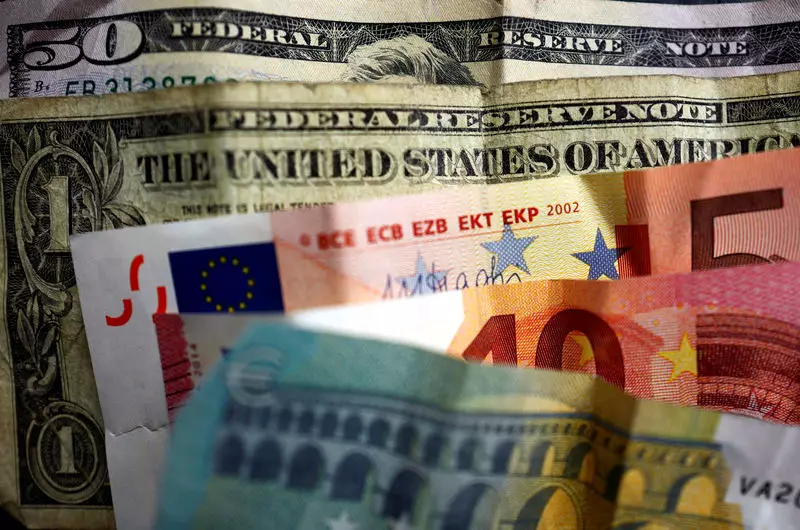In recent trading sessions, the US dollar has seen a slight increase, following a cautious sentiment in the market as traders await the crucial monthly jobs report. On Friday morning, the Dollar Index, which gauges the greenback against a collective of six major currencies, registered a nominal uptick of 0.1%, positioning itself at 105.827. Despite this modest rise, it has remained close to levels not seen in three weeks, following a notable decline of 0.6% the previous day. The prevailing sentiment around the dollar has undergone a shift, primarily influenced by indicators pointing toward a softening labor market. Recent reports reflecting on private payrolls and jobless claims have suggested that the Federal Reserve might have room to enact further interest rate reductions.
Despite concerns over economic weakening, Federal Reserve Chair Jerome Powell addressed these worries in a recent speech, asserting that the economic conditions are more robust than the Fed had anticipated back in September. Nevertheless, market expectations for a possible interest rate cut in December linger, with all eyes on the forthcoming jobs report. Forecasts predict an addition of approximately 200,000 jobs in the nonfarm payrolls for November, a noteworthy recovery from the previous month’s dismal rise attributed to hurricane disruptions. Analysts anticipate a slight increase in the unemployment rate from 4.1% to 4.2%, symbolizing a cautious outlook amidst fluctuating economic indicators.
The euro, in stark contrast to the strengthened dollar, continues to demonstrate weakness. As of recent market data, EUR/USD has faced a downturn, falling 0.1% to 1.0575. This decline follows alarming reports about Germany’s industrial production, which unexpectedly plummeted by 1.0% in October. The decrease compounded an already concerning trend, as the prior month had also showcased a revised drop of 2.0% in production, following a brief surge of 2.6% in August. The German Economy Ministry has expressed grave concerns about this continued downturn, underscoring potential implications for the Eurozone’s largest economy.
Compounding the euro’s struggles are broader Eurozone results, which revealed a mere 0.4% growth rate on a quarterly basis in the third quarter, translating to an annual gain of only 0.9%. These tepid growth figures have prompted anticipations regarding further monetary easing from the European Central Bank (ECB) as meetings approach next week. The market reflects an expectation of more than 150 basis points of easing by the conclusion of 2025, hinting at profound concerns for the Eurozone’s economic trajectory.
Adding to the unease surrounding the euro, political instability in France poses a significant risk factor. Following the recent no-confidence vote against Prime Minister Michel Barnier, uncertainty looms over the French government’s ability to implement vital fiscal measures. Credit rating agency Standard & Poor’s highlighted the absence of a clear strategy to mitigate the nation’s budget deficit, further complicating economic recovery efforts. With the end of the year fast approaching and critical budget deadlines looming, analysts predict meager chances for an amended budget to pass through the legislature before the close of 2024.
Meanwhile, the British pound has experienced a slight boost against the dollar, rising by 0.1% to 1.2763. This increase is fueled by encouraging data indicating a fifth consecutive month of growth in UK house prices, showcasing a revitalizing economy. Halifax, a major mortgage lender, reported a monthly increase of 1.3%, marking the most substantial rise this year. This uptick propelled the annual growth rate to 4.8%, indicative of positive market sentiments surrounding the UK’s housing sector.
Across Asian markets, trading remained relatively subdued as economic participants braced for the anticipated US jobs data. In currency movements, USD/JPY advanced by 0.3% to reach 150.57, while USD/CNY gained 0.2% to 7.2709. Conversely, AUD/USD declined by 0.4% to 0.6426 amidst these developments. The Korean won also reacted to domestic news, with USD/KRW rising 0.5% to 1,419.96 — marking the most significant weekly increase seen since early April.
In the Indian context, the Reserve Bank’s decision to maintain benchmark interest rates and adjust cash reserve ratio requirements has led to a slight dip in the USD/INR, which fell marginally to 84.680. This move, combined with a downward revision of economic growth projections and heightened inflation estimates, adds layers of complexity to the overall economic landscape.
The dollar appears robust amid mixed signals from labor market data while the euro battles setbacks, compounded by regional political instability. The forthcoming jobs report may serve as a pivotal moment, potentially reshaping investor sentiment across the globe. As the market remains watchful, the continuity of these patterns becomes crucial in discerning trajectories for both currencies as the year winds down.

